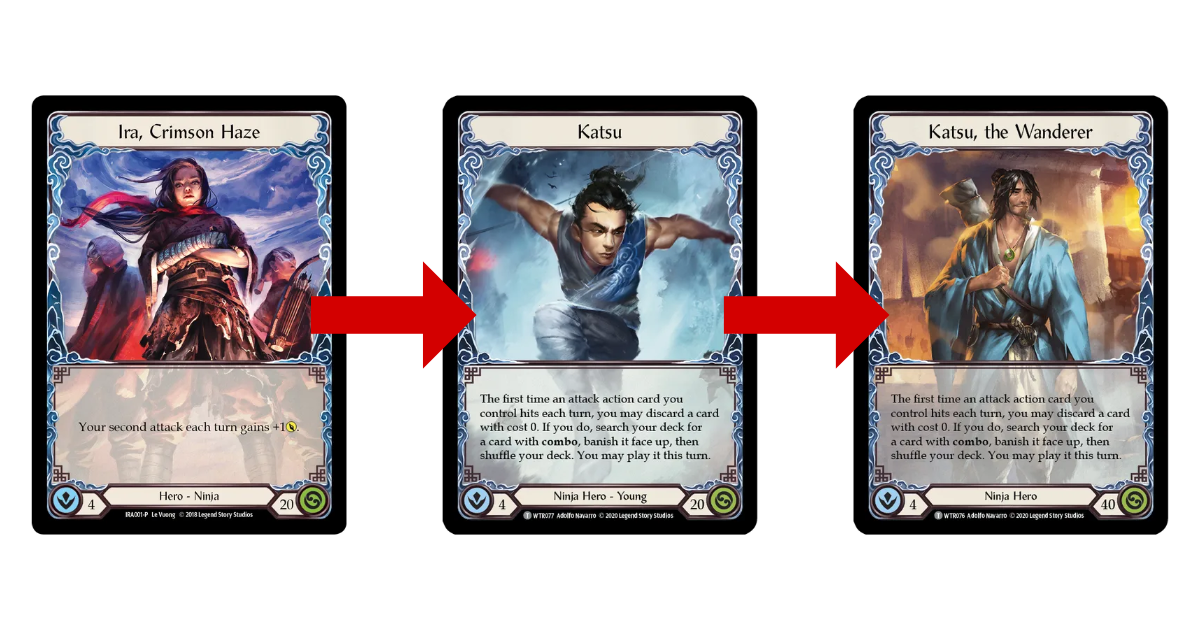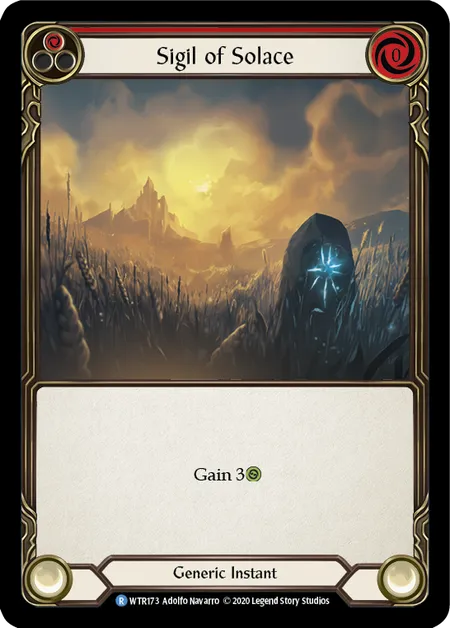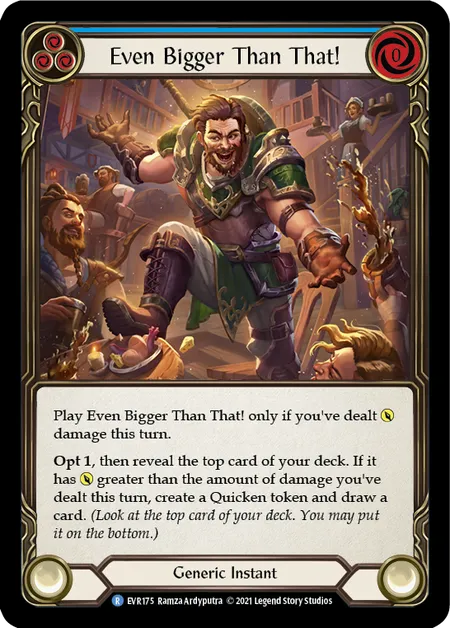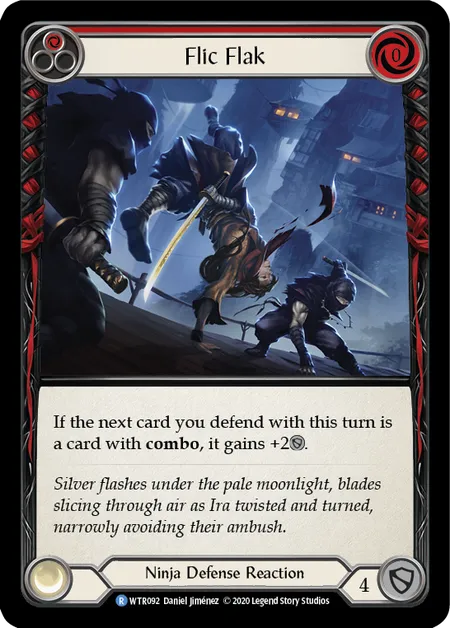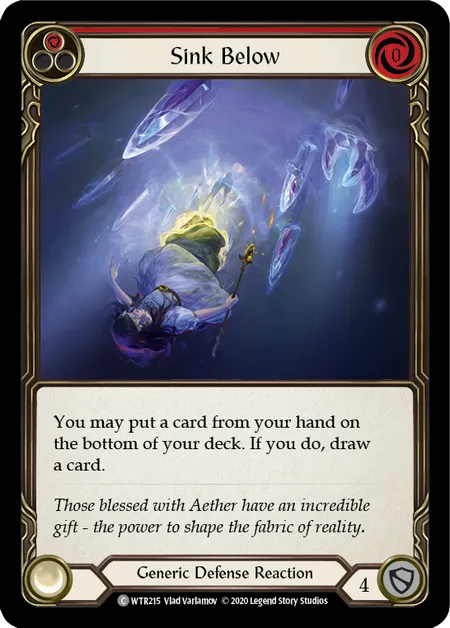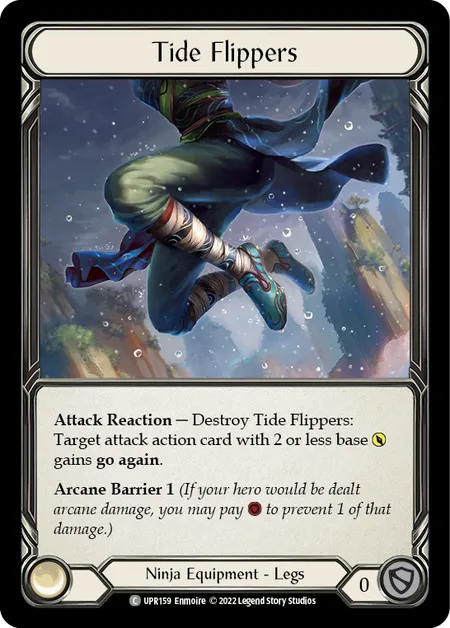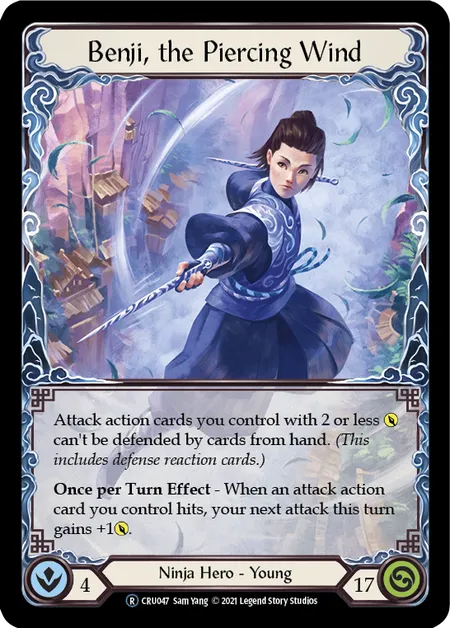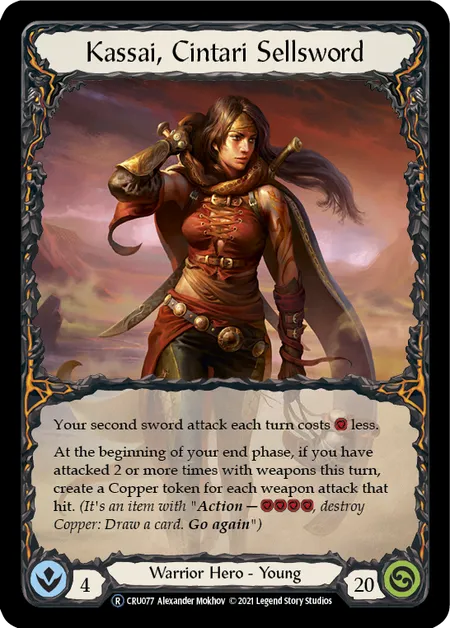The ideal Flesh and Blood starter product
As the first article on this blog, I would like to take a look at a topic close to my heart: new player onboarding.
When I started playing Flesh and Blood in 2021, I was introduced to the game, like many before me, with the Ira Welcome Deck at a local game store (LGS). This deck, consisting of a Hero card, a Weapon card, and a deck with three copies of ten different, low-complexity cards is a great introduction to the game system. However, …
Since the original release of the game with the sealed, draft, and Classic Constructed (CC) formats, additional formats have been created to experience the game in a new way. Arguably the most important format to be added to this roster, is the Blitz format. With its smaller deck size and shorter game length, the format has been popular with new players. And for many players, the journey into the Blitz format began with trimming the Ira Welcome Deck down to two copies of each card, and adding 20 more, as well as some equipment. Due to the Living Legend (LL) system, Ira is no longer legal for competitive play (including the weekly LGS meetups, Armories) and the road from starter deck to the constructed formats (Blitz and CC) has become a lot more nebulous. Thankfully, LSS appears to be committed to releasing a variety of Blitz starter decks with each new set, lowering the barrier to move on from Ira and get into the game proper.
Yet, I believe there is more that can be done. Let me paint you a picture of my ideal starter product.
A boxed product
The best way to draw in new people, is shelf presence at the LGS. Whenever I visit an LGS though, my eye is not usually drawn to the booster rack behind the counter. No, I am intrigued by the beautifully-illustrated box covers of board games. This game does not lack beautiful art, but it does lack a great boxed product at an affordable price that new people can pick up, and which takes them from learning the ropes all the way to the predominant constructed format, CC. The product I will pitch in this post, is a product for two players that takes them from the completely symmetric Ira Welcome Deck matchup to two differing, fleshed-out CC decks.
Stages of play
Let us first look at the stages of play that the boxed product should take you through.
The base level
The Ira Welcome Deck covers the basics of the game pretty well. Ira has an extremely simple ability, which clearly rewards the thing Ninjas want to do: attack multiple times. The deck teaches you about different card types (actions and reactions) and incentivises combat tricks through reactions and arsenal use with Springboard Somersault. Finally, it has a reliable weapon to fall back on that can teach new players how important a reusable source of damage can be once you get low on life or cards. This deck is still a great introduction to the game, and will form the basis of this product. After playing a handful of games with the original starter deck, players are instructed to move on to the next stage.
Adding equipment and the remaining card types
One notable omission from the Ira Welcome Deck, is the equipment that every hero starts the game with. Since equipment is so crucial to a hero’s play style and feel, this seems like a natural first step beyond the starter deck. It further reinforces the feeling of starting at your peak and gradually losing power as the game goes on. The equipment itself should probably be a mix of offensive and defensive tools. For an introductory product, I like the idea of one-time use equipment pieces to focus on finding the most opportune moment to use them, but a single reusable piece of equipment will introduce the concept of repeated value that so many of the legendary equipment pieces offer. Offering players their first customisation option in the form of alternative weapons (Kodachi or Zephyr Needle) further encourages them to explore different builds and play patterns.
At this time, a few cards could be added to the deck too, in particular the card types that are absent in the starter deck: instants and the new block type. For the block type I think the natural choice for Ira is Tiger Eye Reflex, which was introduced in her Round the Table deck, whilst the instant could be good ol’ Sigil of Solace or the more exciting Even Bigger Than That!
Upgrading to Blitz
Since Ira is no longer legal in the Blitz format, and also does not have an adult version, the Blitz upgrade pack should feature two other Ninjas. At the time of writing, there are only two Ninja heroes that are legal in both Blitz and CC, namely Katsu and Fai, though maybe this will change with the newly announced set Part the Mistveil. At this stage, one of the players should receive a pack of Katsu cards, centered around the Combo keyword, whilst the other player gets a pack of Fai cards, focusing on the Rupture keyword. Both packs are accompanied with a sheet of instructions of which cards to take out of their Ira starter deck (the third copy of each card at least) and which new cards to put in. The resulting decks should be tournament-legal 40-card Blitz decks, balanced against each other, with a set of equipment matching the deck’s playstyle. The heroes’ specialization cards should also be featured prominently, since they do so much for a hero’s identity.
Blitz to CC
This step is the least exciting because it is so simple: provide a third copy of most cards, add a few new cards, and the CC deck is ready to go. To spice up this step a bit, it may be interesting to have the resulting decks contain more than 60 cards and encourage the players to take out different cards each game to explore new card combinations and ratios (like pitch), e.g. a Katsu deck can be transformed from an aggressive plan to a more defensive plan with a selection of defense reactions like Flic Flak and Sink Below.
Customisation
The final step here is the most important one to offer replayability out of the box. This set of cards should really open up deck construction, with alternative Combo lines for Katsu and new Draconic options for Fai. Additionally, this is the set to put tech cards like Arcane Barrier equipment for players who wish to play in their local Armory. Other heroes of the Ninja class, like Benji, can also be added here for fun at Blitz Armories.
Advancement
When I sat down to learn the game with my newly-acquired Ira deck at the LGS, the deck did a good job of teaching me the basic flow of the game. What the deck did not teach me, however, is how to win a game of Flesh and Blood. There are many points in the game where small advantages can lead to a positive outcome. This is where the concept of advancement achievements come in.
Advancement achievements
Before letting players move on to a next stage, they receive a checklist of things to achieve in a game, teaching players important concepts that will help them succeed. Each achievement should clearly state why it wants you to accomplish it, and how it may help you in future games.
Consider for example the achievements to progress from the initial Ira deck. They might look something like this:
- Where is my armor? When you have checked all achievements below, open Envelope 1: Armor.
- Use Ira’s ability to bring an attack from 3 to 4 power. Since most cards block for 3, attacking at break points (4 or 7 power) makes your attacks harder to block in full.
- Play Springboard Somersault from arsenal. Playing Springboard Somersault from arsenal saves you two extra life!
- Play an attack reaction after your opponent blocks to get go again on Torrent of Tempo or draw cards from Whirling Mist Blossom. Cards with on-hit effects incentivise your opponent to block, but always anticipate the possibility of a reaction!
- Pitch a red card and draw it after going through your deck once. Since all pitched cards go to the bottom of your deck, you can stack your deck with powerful cards to use closer to the end of the game.
- Take damage on purpose to play Scar for a Scar with go again. Your life is a resource. Use it wisely!
Achievements like this really help players to get a feel for the game, and memorise the good decisions they made during a game.
Extras
Though playmats with labelled zones, like the one included in Classic Battles: Rhinar vs Dorinthea, or storage boxes, like the brick from Round the Table can be great additions to a product, adding in such items should not result in a big price hike of a starter set product. Affordability is key!
Alternative starter sets
Though I have built the concept of this starter set up from the original Ira Welcome Deck, a similar approach could be taken with other classes. I would not recommend going a similar route with complex classes like Wizard, but e.g. Brute and Warrior are very accessible classes too. I could see a set starting with Kayo, Berserker Runt or Kassai, Cintari Sellsword and upgrading to the new heroes from Heavy Hitters. Having different starter sets has the advantage that new players can start with whichever hero design they feel most interested in.
Conclusion
The ideal Flesh and Blood starter product is in my opinion an affordable boxed product for two players, who both start with identical Ira Welcome Decks, and which guides you all the way to vastly different, customisable CC decks. Before moving on to the next upgrade pack, e.g. from a Blitz to a CC deck, the game gives you a list of achievements to attain, gradually introducing more advanced concepts like break points and pitch stacking. I would love to hear your thoughts, so leave a comment below or find me on social media (links in the bottom left)!
